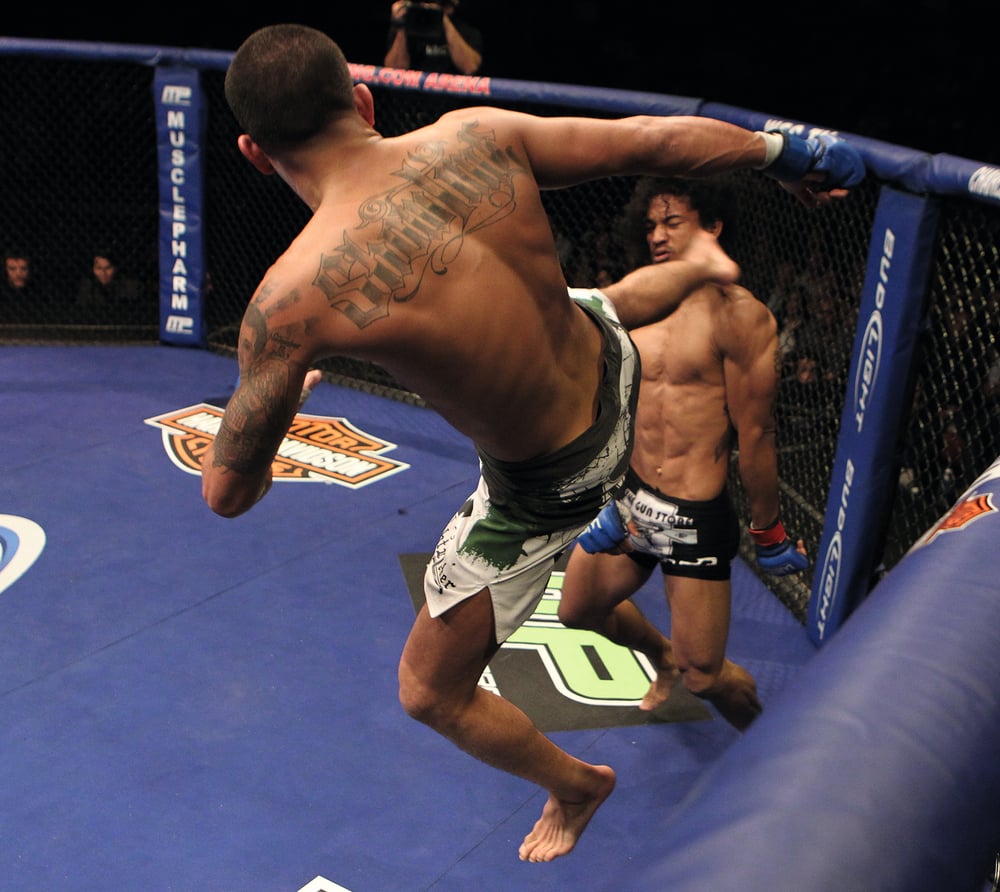
Issue 074
April 2011
Each issue UFC referee Marc Goddard brings fight fans the ref’s side of the story
What exactly constitutes a ‘TKO’ and how do referees know when to stop a fight?
Technical knock out or T(KO) – a very common and recurring ending in today’s modern MMA game, but just what defines a TKO? When and how does a referee know that it is the right time to call a halt to the bout?
A TKO can take on many forms in any given fight. It could be the result of a legitimate and fight-ending injury caused by legal strikes landed by the opponent – think cuts or broken bones as a prime example. Or the TKO could be an injury sustained by a fighter during combat, such as a dislocation: these would render the injured party ‘unable to continue’, but award a TKO win to the opponent in the process.
Perhaps the most contentious and much deliberated of all stoppages is the TKO when the fighter is in no position or fit state to defend themselves and the referee decides that he has seen enough. This is without a doubt the single most commonly debated issue facing an MMA referee. As so often is the case for a ref, we are damned if we do damned if we don’t. Let’s get one thing clear here, when a referee decides to step in and call a halt to proceedings they are, without doubt, doing so solely with the best interests of the fighter in question being saved from any further or unnecessary punishment. Our mind is made up that the fighter is in no position to defend himself. An MMA referee does not have the luxury of time outs, standing eight counts, or replays to assess a fighter’s wellbeing or coherency.

This subject is very close to my heart. Why? Because as a former competitor myself I know just how that fighter is feeling. I have often said that I could referee a fight blindfolded. Not literally, of course. But as a former fighter I can instinctively detect the psychology and atmosphere of an impending stoppage. When I look into the whites of a fighter’s eyes, I can see inside him like no one else can – not his corner men, not the commentary team, not the thousands in attendance or the millions watching around the world. It’s just me and him, and when that fight is stopped and the victor reels off for his adrenaline-fueled celebration, there remains a defeated and often blood-soaked fighter. A picture paints a thousand words, and the seconds that we share as I perhaps cradle their head, and the momentary look between us, proves this adage beyond comparison.
ASK THE REF Q&A
Don’t know your DQs from your decisions? Each issue, Marc will answer your questions on the ‘Unified Rules’ used in MMA.
What is ‘lay ‘n’ pray?’ Do referees differ in their interpretation of the stand up rule? Martin, via email
The Ref says: ‘Lay ‘n’ pray’ is often used to describe the tactic of repeatedly taking an opponent down only to sit in a neutral position without trying to advance. A referee’s interpretation of a particular fighter’s tactics may differ from show to show or country to country. From my own perspective, any fighter who is not willingly looking to advance their position into a possible fight ending scenario is at risk of being stood up. I feel this places the decision firmly with the fighter. It is of course completely within the rules to stay in a grounded position of half guard or full guard providing you’re demonstrating that your work rate of striking of submission attempts doesn’t cease. Work or be stopped, it really is that simple.
Are there rules to address moves using the cage like Anthony Pettis’ Matrix kick or Alan Belcher’s ‘push-off-from-the-cage Superman punch’, or are these tactics open to interpretation from the ref? Chad, via email
The Ref says: “And what a kick that was! There is absolutely no foul in these cases, or a problem with using the cage in this offensive manner. Pushing off from the cage, to reverse an opponent or to launch an attack, does not contravene any of the Unified Rules of MMA. Expect more attempts soon!”
...









